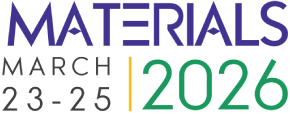Title : Machine learning assisted prediction of solid solubility limits in binary metallic alloys through Hume-Rothery approach
Abstract:
The solid solubility of metallic alloys is a critical factor in designing the materials with tailored properties. Hume-Rothery rules qualitatively predict the solid solubility limits (SSL) in the binary metallic alloys. In recent years, machine learning (ML) approach has become an alternative to predict SSL quantitatively. In the present work, the random forest (RF) and artificial neural networks (ANN) ML algorithms were applied to 2798 binary metallic alloy systems and the solid solubility limits were predicted. The study primarily utilized a set of four features based on the Hume-Rothery rules- namely: atomic size, electronegativity, valence, and crystal structure. It also considered an additional set of four features, based on three physical parameters: atomic weight, density, melting point, and one thermodynamic parameter: heat of mixing. In order to quantify the crystal structure factor, a ‘crystal structure weightage factor’ (CSWF) was devised and implemented. In the feature extraction step, the features valence, atomic weight and density were excluded while retaining the five features. After processing, the resulting accuracies of the training and test were 98% and 84% respectively by RF regression, and 99% and 82% respectively by ANN regression. Among the Hume-Rothery features, the atomic size and crystal structure were calculated to have a feature importance of 21 & 20% respectively. Similarly, in the additional features, the heat of mixing and melting point showed the feature importance of 22% & 15% respectively. In addition, the data visualization and correlation matrix provide key insights into the solid solubility, which will presented. This study can also be extended to the multicomponent systems such as the high entropy alloys and the bulk metallic glasses.



